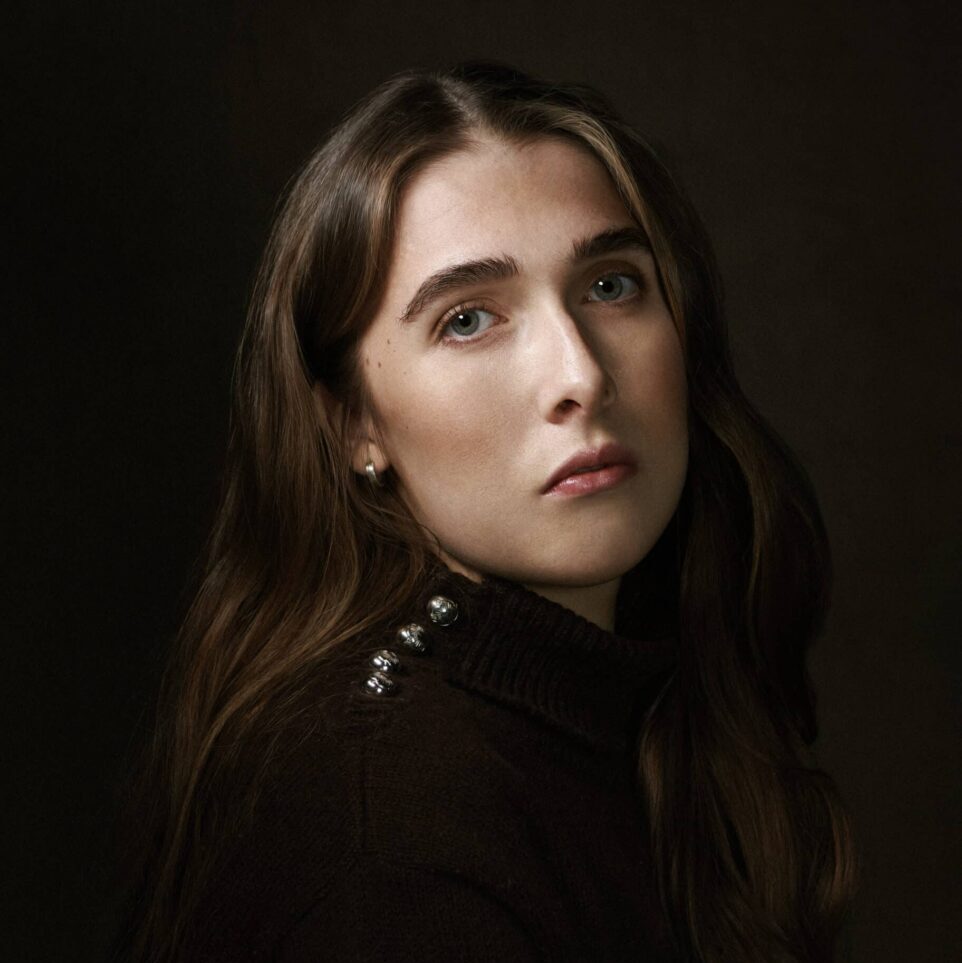Model shoots are a great chance to flex your photography skills, and an awesome way to make your online photography portfolio stand out from the rest. That’s because when you’re shooting models, you have the unique opportunity of working with a subject who is probably a bit more comfortable with a big portrait lens pointed at them than most of us are.
Whether you’re working on a fashion shoot, a commercial gig, or just building that portfolio, it’s important that you cover all your bases legally to make sure you’re not going to get into trouble down the road. Some photographers think that if you’re working on a TFP shoot you don’t actually have to worry about model releases, but that’s not the case.
Whether the model is getting paid for the gig or not, and whether they’re professional, amateur, or regular people you just happen to capture, it’s best practice to put together a model release form to have on hand for any and all shoots that you work on. We’ve got the answers to all your model release related questions right here!
What is a Model Release Form, Exactly?
Think of a model release as a contract that outlines what you and your client can do with the photographs you are taking of a model. It is an important legal document that every photoshoot should include because it protects you and your client from future liabilities or lawsuits related to use of the image. It also protects the model because they can specify if they do not want the photograph to be used in certain ways or for certain purposes.
A model release form also outlines how the model will be compensated for their release of rights to the images of them. A good model release form should leave all parties feeling like the exchange was a fair one.
They are sometimes referred to as model consent forms because the model release contract gives you explicit consent from the model to use the images in the ways that specified in the document.
When Do You Need a Model Release?
A model release is often required by law, but this varies quite a lot from state to state and country to country. There are situations where you need a standard model release form no matter where you are shooting, but the safest bet is to create a generic model release form that you bring to every single shoot you do. It’s much better to be safe than sorry!
In general, you are required by law to have a model photo release form signed when the images you are taking are going to be used for commercial purposes as opposed to editorial purposes. Commercial usage means the image will be used for some kind of sales or marketing purposes. If the image is going to be used in an ad, on an e-commerce website, in a catalogue or on a billboard, for example, the usage would be commercial and it is required that you have a model release form.
Editorial photography refers to images that aren’t being used to promote a product, event, or concept. They’re usually used in journalism or news type of outlets, and they don’t require any kind of model release as long as they’re only being used for editorial purposes.
If you’re shooting something like an event to appear in a magazine to accompany an article about the event, those images would serve an editorial rather than commercial purpose and you don’t need to get everyone in the photo to sign a model release.
But if, say, the venue where the event was hosted wants to license that image from you so that they can use it in brochures and ads for their venue space, that becomes commercial. If you don’t have a model release signed by everyone who appears in the photo, you’re out of luck when it comes to using or licensing it for commercial purposes.
Sometimes, you might shoot a photograph without the intention of using it for commercial purposes, then an opportunity to use it commercially comes up. Maybe you want to sell it as stock photography. In that case, you would need a model release form signed. Since the photo might be old and you might not be in touch with the model, it’s a good idea to get that model release signed during the photoshoot so that you’re covered.
If you don’t have a model release and want to sell something as a stock image, most stock photography websites do have the option of specific that the image is for editorial use only. Even so, it’s best to have a model release form signed to avoid trouble if the person buying the image uses it beyond the specifics of the license.
A gray area that often comes up is when the person in the photo isn’t clearly identifiable. Technically, if people in an image can’t be identified, you don’t have to worry about getting a standard model release form signed. You can go ahead and publish the image, use it commercially, or authorize a third party to do so without worrying about liability.
This often trips people up, because even if you can’t see someones face, they’re often identifiable for other details like their hair, tattoos, silhouette, or even the location and time that the photo was taken. You have to be careful with this, because you might take a photo in a public space and publish it not thinking anyone is identifiable, but technically you could be taking a risk.
Another gray area is with respect to online portfolios. While you might not be explicitly selling something with the photos you have in a gallery, it could be interpreted that all of the images you have there are published with the intent of gaining more clients, making them commercial. That’s why it’s always best to just get that standard model release form signed, just in case!
What Goes into a Basic Model Release Form?
There are lots of good resources online that you can use as templates for your own standard model release, rather than trying to create your own from scratch. Still, it’s a good idea to know what the key components of a model release are so that you can make sure the one you use checks off all the boxes.
A valid model release form needs to obligate both parties, rather than just asking that the model sign away the rights to their likeness for nothing in return. That’s a pretty big ask! So while the model is being asked to surrender their rights to the photos you’re taking of them, the photographer should also offer something in return.
Often, this is monetary compensation. But as most photographers know, plenty of model shoots are TFPs, or trades for prints. That means that the model release form should indicate that in return for the model’s release of rights to the photos, the photographer is exchanging a specified amount of prints or digital files, as agreed upon beforehand. The details of the exchange need to be explicitly stated in the model release.
Another key piece of information that needs to be included in a standard model release form is that the model is consenting for not only the photographer to use the photos, but also whoever the photographer authorizes. The reason this needs to be included in the model release is that you, the photographer, are often not the one who will actually be publishing the images.
Sometimes you might be the publisher, but often it will be the client who you’re shooting for or the publication you’re selling the image to. This way, if you’re shooting a model and the client is a clothing company creating a cool new lookbook, both you and the clothing company who you authorize to publish the image can use it without any concern that you’ll be liable for using it illegally.
If you’re picturing some long and complicated document, rest assured that standard model release forms are usually short and to the point. You can often fit everything you need on a single page. Some photographers make even shorter, unintimidating versions that they can carry in their camera bag. That way, you can quickly obtain a model release when you take a picture you think you might be able to sell for commercial use.
You should digitize these and store them somewhere safe both digitally and physically, since model release forms are important documents that you don’t want to lose. If, for whatever reason, your subject decides to sue you or the third party you authorized to use the image for using it improperly, you’ll need this document in order to protect yourself in court. This could happen tomorrow or it could happen in 20 years, so keep those model releases safe!
How Can I Put Together a Model Release Form Template?
Instead of putting together a model release form template from scratch, you should find a good sample model release form online and use it as a starting point, filling in your own personal information and that of your model. There are tons of options online—Law Depot is a good choice if you’re in the US, Canada, or Australia, but if you search for “model release form + <>” you’ll be able to find something appropriate for your specific region.
When you’re looking for a good model release form, you can search specifically for the type of shoot you are doing. For example, you can search for an event photography model release, a portrait model release, or a wedding photography model release, to name a few more specific types of forms that you’ll be able to find.
Are There Any Special Considerations When it Comes to Creating a Model Release Form for Minors?
Yes! If you’re shooting a minor, it’s important that a parent or guardian is present when the standard model release form is being signed, and that they sign as well. If a parent or guardian isn’t present, the model release probably won’t be considered valid. That could cause you all kinds of legal headaches in the future, so make sure you follow this rule.
Do I Need to Have My Model Release Template Looked at by a Lawyer Before I Start Using it?
You’ll have to use your discretion here, but, for most shoots, the simple model release forms you can find online are totally adequate. If you’re doing a bigger shoot for a larger commercial client, it might be a good idea to have a lawyer look over your model release template to make sure it’s airtight and that you’re covering yourself for all possible situations that could arise.
Once you’ve got all the model releases shorted for your model photo shoots, you can confidently share them with the world on your photography website! If you haven’t built one yet, don’t sweat it. You can have one up and running in minutes by using a website builder to do all the heavy lifting for you. All you have to do is upload your images and customize your favorite template to your liking. Look for an online portfolio website that offers a free trial so that you can take it for a test run before committing. If you’re not sure where to start when it comes to designing your online portfolio, check out our guide on how to build a photography website. If you’re frequently on the go, another great feature to look out for when you’re picking out your website builder is an iPhone app. A good one allows you to actually manage and create gallery pages from your mobile device, so you can freshen up that portfolio no matter where you are.
Can’t wait to see all your amazing model shoots!
Want to know more about the business side of photography?
12 Creative Entrepreneurs Share Their Business Advice
Do Artists Need An Agent?
The Secret to Dealing with an Unhappy Photography Client














